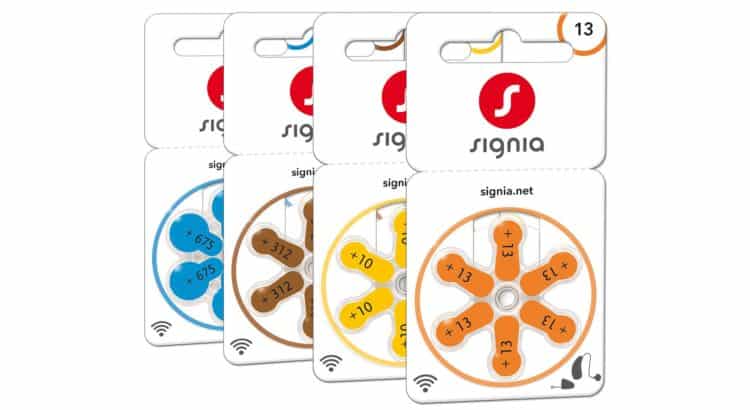The majority of hearing aids in circulation are battery operated but rechargeable options are becoming a more popular option for a lot of people. But what are the benefits of having a battery powered hearing aid and what are the things to know about hearing aid batteries – let’s discuss.
Understanding hearing aid batteries
There are generally 4 different sizes of hearing aid batteries, and they are as follows:
| Battery size | Colour Code | Expected Life Span | Where you may find them |
| 675 | Blue | 9-20 days | Power hearing aids (larger Behind The Ear hearing aids) |
| 13 | Orange | 7-14 days | Some Behind The Ear hearing aids and some In The Ear Hearing aids |
| 312 | Brown | 4-10 days | The majority of hearing aids form Behind The Ear (and RIC hearing aids) to In The Ear |
| 10 | Yellow | 3-7 days | Generally smaller hearing aids (Completely In The ear/ invisible hearing aids) |
It is worth noting that most hearing aid batteries are zinc air – this means the battery is only activated once it encounters oxygen and this encounter happens when you remove the battery tag. Once removed, a chemical reaction occurs within the battery, and your battery is activated – therefore, YOU MUST NOT remove the battery tag before you come to need your battery. The battery (once activated) will drain regardless; however, you can conserve battery life by turning the hearing aid off when you’re not using it e.g., at night.
3 top tips to get the most of your battery
- When you remove the tag, try and allow the battery to stand for up to 5 minutes before use. This can extend the battery life by up to 72 hours. This allows the battery to fully activate due to oxygen exposure. So, if you feel you’re not getting the full life span out of your battery then do please try this little trick.
- Another thing to consider is investing in a hearing aid dehumidifier, especially if you use the hearing aid during high activity scenarios such as running or exercise classes. Moisture can build up in the battery compartment and lead to rust – this can ultimately damage your hearing aid beyond repair and certainly will hinder the battery’s predictive lifespan.
- If you want to know if your battery is drained, simply drop the battery on a hard surface – if it bounces, the battery is empty and has depleted BUT if the battery bounces, then there’s still life left in it. Alternatively, and more accurately, you can buy a battery tester.
The benefits of battery-operated hearing aids over rechargeable
One glaring advantage of a battery-operated hearing aid is the initial cost of the aid. Non rechargeable hearing aids are generally cheaper to purchase than rechargeable ones, though it is disputed that the cost saving is minimal over a 3-year period. Another benefit of battery powered hearing aids is that batteries are readily available; so, if you were to forget your charging station you may be hard pressed to find an adaptable charging unit for your rechargeable hearing aids, whereas with a battery operate device, you can simply purchase your required batteries. If you desire to have a small hearing aid like an In The Ear aid then you’re more likely to find that your only option is a battery powered device. Battery technology is advancing at such a rate that a lot of manufactures are beginning to create rechargeable In The Ear hearing aids but the options are still limited. However, If you’re looking at a Behind The Ear device then your options are endless.
We are proud to be able to offer both rechargeable and battery-operated hearing aids and you can view our range here. You can also purchase hearing aid batteries here.

